CP5: Use of innovative, preventive and mechanical methods of weed control in NOcsPS-systems
The weed control measures in the first funding phase showed that the preventive mechanical methods used in the NOcsPS and organic farming system were not sufficiently effective. A residual weed infestation of up to 20 weeds m-2 after completion of all weed control methods will increase the weed seed bank in the soil and lead to significant yield losses in the subsequent crops (Saile et al. 2023). Weed control methods must therefore be improved, especially against the problematic weed groups of weeds and perennial weeds.
In a study by Öczan and Gerhards (2024), it was also shown that the competitiveness of problem weeds such as Chenopodium album and Echinochloa crus-galli is increased by mineral nitrogen.
The aim of the project is to improve preventive and mechanical weed control and to investigate its effects on biodiversity.
The main focus of the project is
- the allelopathic effect of catch crops and their crop residues on weed suppression,
- the potential of different cultivation elements for a hoe in maize (roller hoe) and soya (finger and torsion hoe),
- and the precise cutting of ears and panicles of weeds above the crop (TopCut®) in connection with the reduction of soil seed potential.
The trials are to be integrated into the system and accompanying trials at the University of Hohenheim (Heidfeldhof), the Ihinger Hof and the JKI. All trials are to be repeated over three years. In the trials, the weed and crop density before and after each control, species diversity, biomass of weeds and crops and the yield of the weed plant will be recorded. In the TopCut® trial, the weed seeds and their viability are determined. The companies Zürn and K.U.L.T. are industrial partners.
Results are to be obtained on the weed suppression of catch crops, the weed control of inrow hoeing elements and the reduction of weed seed inputs into the soil via TopCut®.



